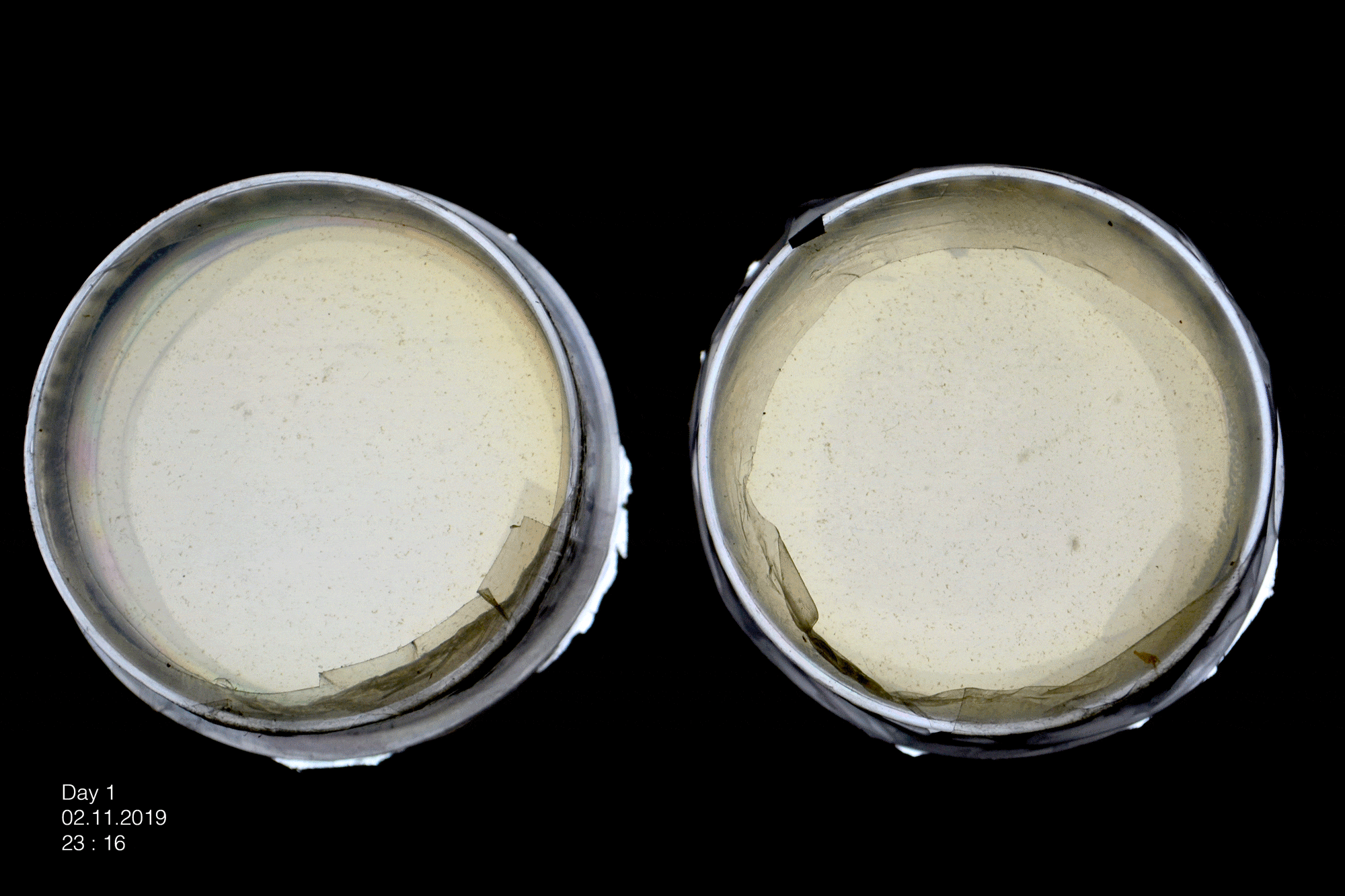Dealing with ethical issues by removing the use of animal leathers within the Fashion industry.
Marie Melcore is a material, textile and graphic designer. These three fields allow her to evolve in a transversal and multidisciplinary context.
By developing them through the biodesign prism, she addresses environmental issues and the relationship between living organisms and design.
Marie Melcore is a material, textile and graphic designer. These three fields allow her to evolve in a transversal and multidisciplinary context.
By developing them through the biodesign prism, she addresses environmental issues and the relationship between living organisms and design.
MYCELIUM
Category
Biodesign
Mycelium | Material innovation | 3D-printing
Carried out at
MA Biodesign
Central Saint Martins
University of the Arts London
Conducted with
Tutors
Nancy Diniz | Course Leader
MA Biodesign
Carole Collet | Professor in Design for Sustainable Futures
Alice Taylor | Lecturer of Biology and Living Systems
Shem Johnson | Grow Lab Specialist Technician
Material Library
Bioconstrução
Augmented Architecture
Location
London — UK
Date
Feb. 2020
Cultivating Grey Oyster Mushrooms (Pleurotus ostreatus) Using Local Waste: A Design Endeavor in Harmony with Nature.
Mycelium, the vegetative component of fungi, consists of intricate networks of branching hyphae. Fungal colonies formed by mycelia are present in soil and on various substrates. This project's objective is to delve into the potential of mycelium as a biological binder, driving the exploration and testing of innovative materials.
Our approach involves crafting the substrate from local waste materials sourced from Central Saint Martins. This approach not only diminishes waste incineration but also bestows a renewed purpose upon products, conserves energy, curbs carbon emissions linked to material transportation, and imparts authenticity linked to the waste's origin. In embracing a circular economy, we magnify the value of waste. Ultimately, a striking 80% of the substrate composition comprises waste materials from the University.

Mycelium growth in M.E.Y.A. | Observation during 10 days.


Simulation of the mycelium's skeleton | FIJI software.





3D modeling by Carolina Kyvik Ruiz | Format: 26 x 26 cm.






Mycelium tiles made from Central Saint Martins waste | Format: 26 x 26 cm.